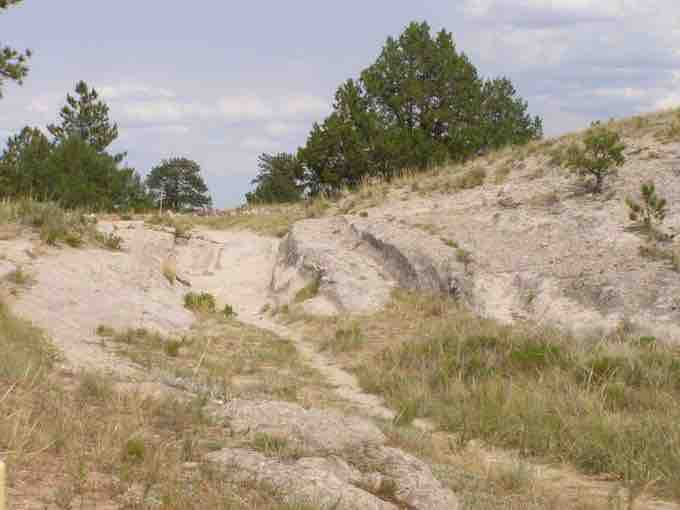Oregon Trail
The Oregon Trail was a 2,000-mile, historic east-west wagon route and emigrant trail that connected the Missouri River to valleys in Oregon and locations in between. The eastern part of the trail spanned part of the future state of Kansas and nearly all of what are now the states of Nebraska and Wyoming. The western half of the trail spanned most of then future states of Idaho and Oregon.
Oregon Trail
The path of the Oregon Trail, spanning the present-day states of Kansas, Nebraska, Wyoming, Idaho, and Oregon.
The beginnings of the Oregon Trail were laid by fur trappers and traders from about 1811 to 1840; these early trails were only passable on foot or by horseback. By 1836, when the first migrant wagon train was organized in Independence, Missouri, a wagon trail had been cleared to Fort Hall, Idaho. Wagon trails were cleared increasingly further west, eventually reaching the Willamette Valley in Oregon. Each year, as more settlers brought wagon trains along the trail, new cutoff routes were discovered that made the route shorter and safer. Improved roads, ferries, and bridges also improved the trip. There were various offshoots in Missouri, Iowa, and the Nebraska Territory; the routes converged along the lower Platte River Valley near Fort Kearny, Nebraska Territory and led to rich farmlands west of the Rocky Mountains.
From the early to mid-1830s, and particularly through the epochal years of 1846–1869, about 400,000 settlers, ranchers, farmers, miners, and businessmen and their families used the Oregon Trail and its many offshoots. The eastern half of the trail was also used by travelers on the California Trail (from 1843), Bozeman Trail (from 1863), and Mormon Trail (from 1847), who used many of the same trails before turning off to their separate destinations. Use of the trail declined as the first transcontinental railroad was completed in 1869, making the trip west substantially faster, cheaper, and safer. Today, modern highways such as Interstate 80 follow the same course westward and pass through towns originally established to service the Oregon Trail.
Overland Trail
The Overland Trail (also known as the Overland Stage Line) was a stagecoach and wagon trail in the American west during the 19th century. While explorers and trappers had used portions of the route since the 1820s, the Overland Trail was most heavily used in the 1860s as an alternative route to the Oregon, California, and Mormon Trails through central Wyoming. The Overland Stage Company owned by Ben Holladay famously used the Overland Trail to run mail and passengers to Salt Lake City, Utah, via stagecoaches in the early 1860s. Starting from Atchison, Kansas, the trail descended into Colorado before looping back up to southern Wyoming and rejoining the Oregon Trail at Fort Bridger. The stage line operated until 1869, when completion of the First Transcontinental Railroad eliminated the need for mail service via stagecoach.

Ruts on the Oregon Trail
So many wagons traveled the Oregon Trail that ruts are still visible along some sections. This photograph was taken in 2008 in Wyoming.
Who Were the Settlers?
In the 19th century, as today, relocating and starting a new life took money. Because of the initial cost of relocation, land, and supplies, as well as months of preparing the soil, planting, and subsequent harvesting before any produce was ready for market, the original wave of western settler-invaders along the Oregon Trail in the 1840s and 1850s consisted of moderately prosperous, white, native-born farming families from the east. More recent immigrants also migrated west, with the largest numbers coming from Northern Europe and Canada. Germans, Scandinavians, and Irish were among the most common. Compared with European immigrants, those from China were much less numerous, yet still significant.
In addition to a significant European migration westward, several thousand African Americans migrated west following the Civil War, as much to escape the racism and violence of the Old South as to find new economic opportunities. The latter were were known as exodusters, referencing the biblical flight from Egypt, because they fled the racism of the South, with most headed to Kansas from Kentucky, Tennessee, Louisiana, Mississippi, and Texas. By 1890, over 500,000 African Americans lived west of the Mississippi River.